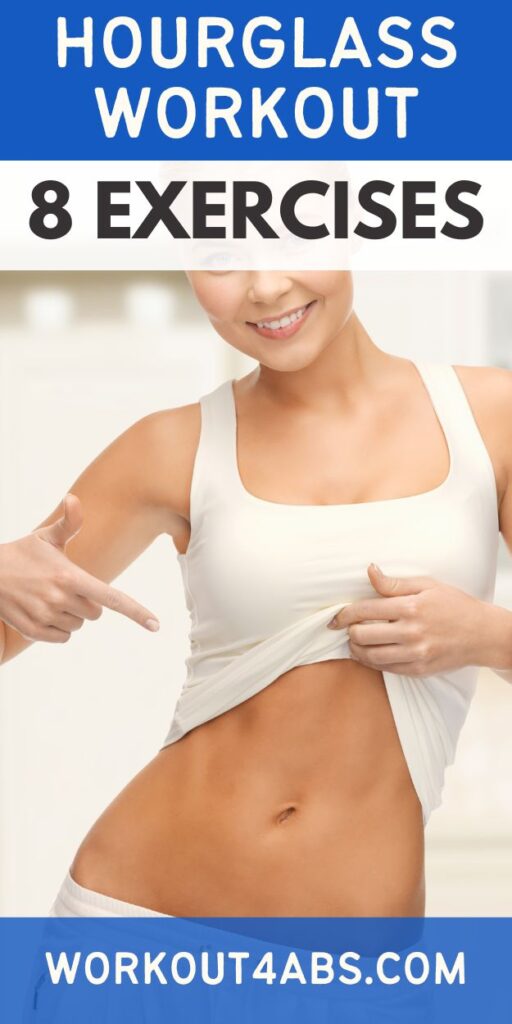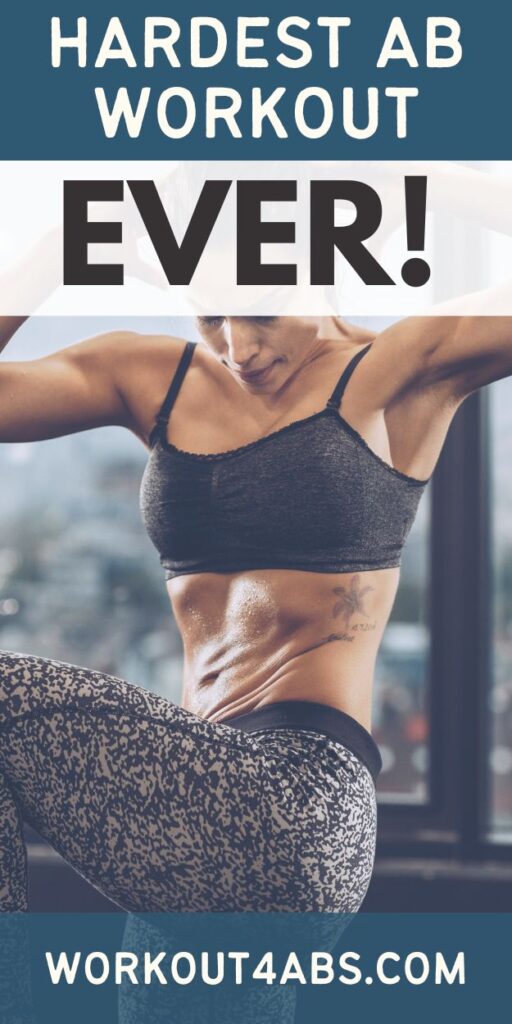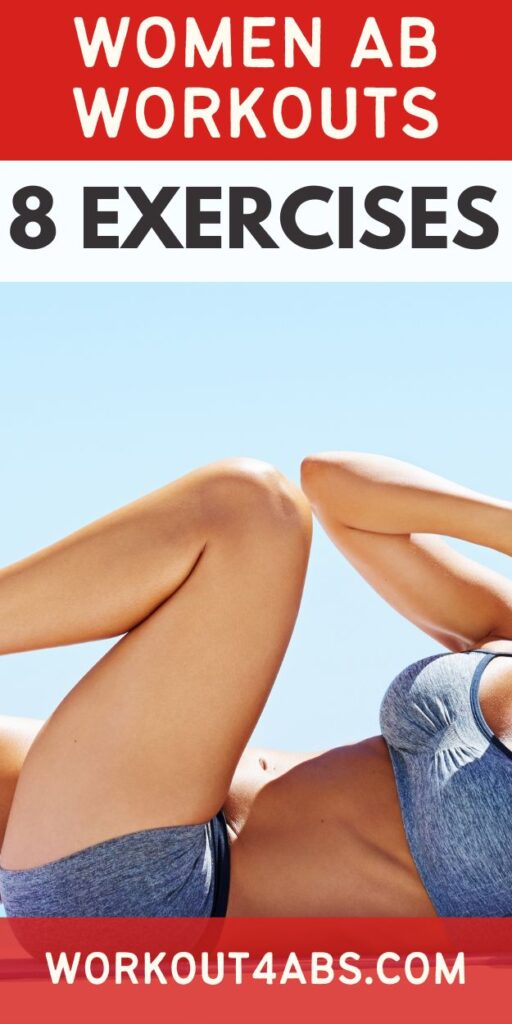Discover the best ab exercises for women. Develop a stronger core and lose belly fat with our guide to the best ab exercises tailored for women. From efficient routines to targeted movements, we unveil exercises that empower women to achieve a toned abdomen and overall well-being.
8 Best Ab Exercises to for Women
- Reverse Crunches:
- Lie on your back with your knees bent and your feet flat on the floor.
- Place your hands on the floor beside you or under your hips for support.
- Engage your core muscles to lift your legs off the ground, bringing your knees towards your chest.
- As you lift your hips off the floor, curl your pelvis slightly to roll your knees towards your head.
- Slowly lower your legs back to the starting position, but keep them slightly elevated to maintain tension in your abs.
- Repeat for the desired number of reps.
- Russian Twist:
- Sit on the floor with your knees bent and your feet flat on the ground.
- Lean back slightly while maintaining a straight back and engage your core.
- Lift your feet off the ground, balancing on your sit bones.
- Hold your hands together in front of you or hold a weight for added resistance.
- Twist your torso to the right, bringing your hands or weight towards the floor beside your hip.
- Return to the center and then twist to the left side.
- Keep your core engaged throughout the movement and control the twisting motion.
- Reach Through:
- Lie on your back with your legs extended and your arms stretched out overhead.
- Engage your core muscles and lift your shoulders off the ground, reaching your right hand towards your left foot.
- Lower your upper body back down and then lift it again, this time reaching your left hand towards your right foot.
- Alternate reaching through while keeping your core tight.
- Leg Drops:
- Lie on your back with your legs extended towards the ceiling.
- Place your hands by your sides or under your hips for support.
- Slowly lower your legs towards the floor while engaging your core to maintain stability and prevent your lower back from lifting off the ground.
- Stop when you feel your lower back starting to arch or lose contact with the floor.
- Raise your legs back up to the starting position and repeat.
- Cross Crunches:
- Lie on your back with your knees bent and your feet flat on the floor.
- Place your hands behind your head, but avoid pulling on your neck.
- Lift your upper body off the ground and simultaneously bring your right elbow towards your left knee.
- As you lift, twist your torso to bring your elbow and knee closer together.
- Lower your upper body back down and then repeat on the opposite side.
- Plank:
- Start in a push-up position with your hands directly under your shoulders and your body in a straight line from head to heels.
- Engage your core and glutes to keep your body stable.
- Hold this position, focusing on keeping your core tight and your body in a straight line.
- Avoid letting your hips sag or lifting your hips too high.
- Hold for the desired amount of time.
- Single Leg Jackknife:
- Lie on your back with your arms extended overhead and your legs straight.
- Lift one leg off the ground while simultaneously lifting your upper body off the ground.
- Reach your hands towards your lifted foot, trying to touch your foot or shin.
- Lower your leg and upper body back down to the starting position.
- Repeat on the other side, alternating legs.
- Russian Twist (again, with more detail):
- Sit on the floor with your knees bent and your feet flat on the ground.
- Lean back slightly while maintaining a straight back and engage your core.
- Lift your feet off the ground, balancing on your sit bones.
- Hold your hands together in front of you or hold a weight for added resistance.
- Twist your torso to the right, bringing your hands or weight towards the floor beside your hip.
- Return to the center and then twist to the left side.
- Keep your core engaged throughout the movement and control the twisting motion.
- To increase difficulty, you can lift your feet higher off the ground or use a heavier weight.
Remember to focus on proper form and control for each exercise. If you’re new to these exercises or exercise in general, it’s a good idea to start with lower repetitions and gradually increase as your strength improves. Additionally, if you have any pre-existing medical conditions or concerns, it’s recommended to consult with a fitness professional or healthcare provider before starting a new exercise routine.
Hourglass Abs Workout | 10 Minutes
If you enjoyed these tips, please save this pin to your Pinterest Board.

Why Do Some People Struggle with Stomach Fat?
Stomach fat, also known as visceral fat or abdominal fat, can accumulate due to a combination of factors related to lifestyle, diet, and physical activity. While genetics and hormonal factors also play a role, the factors you mentioned—being out of shape, consuming unhealthy food, and having a sedentary lifestyle—can significantly contribute to the buildup of stomach fat. Here’s how each factor contributes:
- Lack of Physical Activity (Being Out of Shape): When you engage in physical activity, your body burns calories for energy. Regular exercise helps maintain a healthy metabolism, which is crucial for managing body weight. If you’re out of shape and not regularly engaging in physical activities, your metabolism might slow down, leading to fewer calories being burned throughout the day. This can result in an energy imbalance where you’re consuming more calories than you’re expending, leading to weight gain, including the accumulation of stomach fat.
- Unhealthy Diet: Eating a diet that’s high in processed foods, sugary snacks, sugary beverages, and excessive amounts of unhealthy fats can contribute to weight gain and the accumulation of visceral fat. Such foods tend to be calorie-dense and nutrient-poor, meaning they provide a lot of calories but few essential nutrients. Additionally, a diet high in sugars and unhealthy fats can lead to insulin resistance, a condition in which the body’s cells become less responsive to the hormone insulin. This can result in higher levels of insulin in the bloodstream, which is associated with fat storage, particularly in the abdominal area.
- Sedentary Lifestyle: Leading a sedentary lifestyle, which involves sitting or lying down for prolonged periods with little physical movement, can lead to weight gain and the accumulation of stomach fat. When you’re inactive, your body burns fewer calories, and prolonged sitting can negatively impact metabolism. Additionally, lack of physical activity can contribute to muscle loss and a decrease in muscle mass. Muscles play a crucial role in burning calories, even at rest, so a reduction in muscle mass can further slow down metabolism and promote fat gain.
- Hormonal Changes: Chronic stress and poor sleep, which are often associated with a sedentary lifestyle and unhealthy eating habits, can lead to hormonal imbalances. These imbalances can contribute to weight gain, particularly around the abdominal area. For example, increased stress can lead to higher levels of cortisol, a hormone that’s linked to fat storage, especially in the visceral region.
- Genetic Factors: While lifestyle choices play a significant role in the accumulation of stomach fat, genetics can also influence how your body stores fat. Some individuals might be genetically predisposed to carry excess weight around their abdomen.
It’s important to note that targeting stomach fat specifically through exercise or diet alone is challenging. A comprehensive approach involving regular physical activity, a balanced and nutrient-dense diet, stress management, and adequate sleep is necessary for overall weight management and the reduction of stomach fat. Consulting with a healthcare professional or a registered dietitian can provide personalized guidance based on your individual circumstances and goals.
Hardest ABS Workout EVER (8 MINUTES OF PAIN = FAST RESULTS!)
If you enjoyed these tips, please save this pin to your Pinterest Board.

Why you need more than just ab exercises to lose belly fat
Doing ab exercises can certainly help strengthen the muscles in your abdominal area, but they might not be sufficient for everyone to lose belly fat. There are several reasons why ab exercises alone might not lead to significant fat loss in the belly region:
- Spot Reduction Myth: The concept of spot reduction, where you target fat loss from a specific area of the body through exercise, is a misconception. When you engage in ab exercises, you’re primarily working to strengthen and tone the muscles in that area. While this can lead to increased muscle definition, it doesn’t necessarily lead to a significant reduction in the layer of fat covering those muscles.
- Overall Body Fat Percentage: Losing fat in any specific area of the body requires an overall reduction in body fat percentage. Your body tends to store and burn fat in a genetically predetermined manner. For many people, the abdominal region is one of the places where fat is stored, and it’s often one of the last areas to see fat loss. To effectively reduce belly fat, you need to focus on reducing your overall body fat through a combination of healthy eating and regular exercise.
- Diet’s Role in Fat Loss: Diet plays a crucial role in fat loss. Even if you’re doing ab exercises regularly, if you’re consuming more calories than you’re burning, you won’t see significant fat loss results. A calorie deficit—where you’re burning more calories than you’re consuming—is necessary to trigger fat loss throughout the body, including the belly area. Consuming a balanced diet that’s lower in calories and provides essential nutrients is key to achieving fat loss goals.
- Genetics and Hormones: Genetics and hormonal factors influence where your body tends to store and lose fat. Some people might naturally store more fat in the abdominal region, and this can make it more challenging to lose belly fat compared to other areas. Hormones, such as cortisol (associated with stress), can also play a role in fat storage, especially in the abdominal area.
- Metabolism and Muscle Mass: Your metabolism and muscle mass influence how efficiently you burn calories, both during exercise and at rest. Engaging in ab exercises alone might not significantly boost your metabolism or contribute to the calorie burn needed for substantial fat loss. Full-body exercises that engage multiple muscle groups and increase overall energy expenditure can be more effective for fat loss.
- Consistency and Patience: Fat loss takes time and consistent effort. It’s important to have realistic expectations and understand that visible changes might not happen overnight. People often notice fat loss in different areas at different rates, and genetics can influence how your body responds to exercise and diet.
To effectively lose belly fat, a comprehensive approach that combines cardiovascular exercise, full-body strength training, a balanced diet, stress management, and sufficient sleep is recommended. It’s also important to focus on overall health and well-being rather than solely targeting a specific area of the body. Consulting with a healthcare professional or a registered dietitian can provide personalized guidance tailored to your individual needs and goals.
If you enjoyed these tips, please save this pin to your Pinterest Board.

Home › Workouts for Women ›Best Ab Exercises for Women